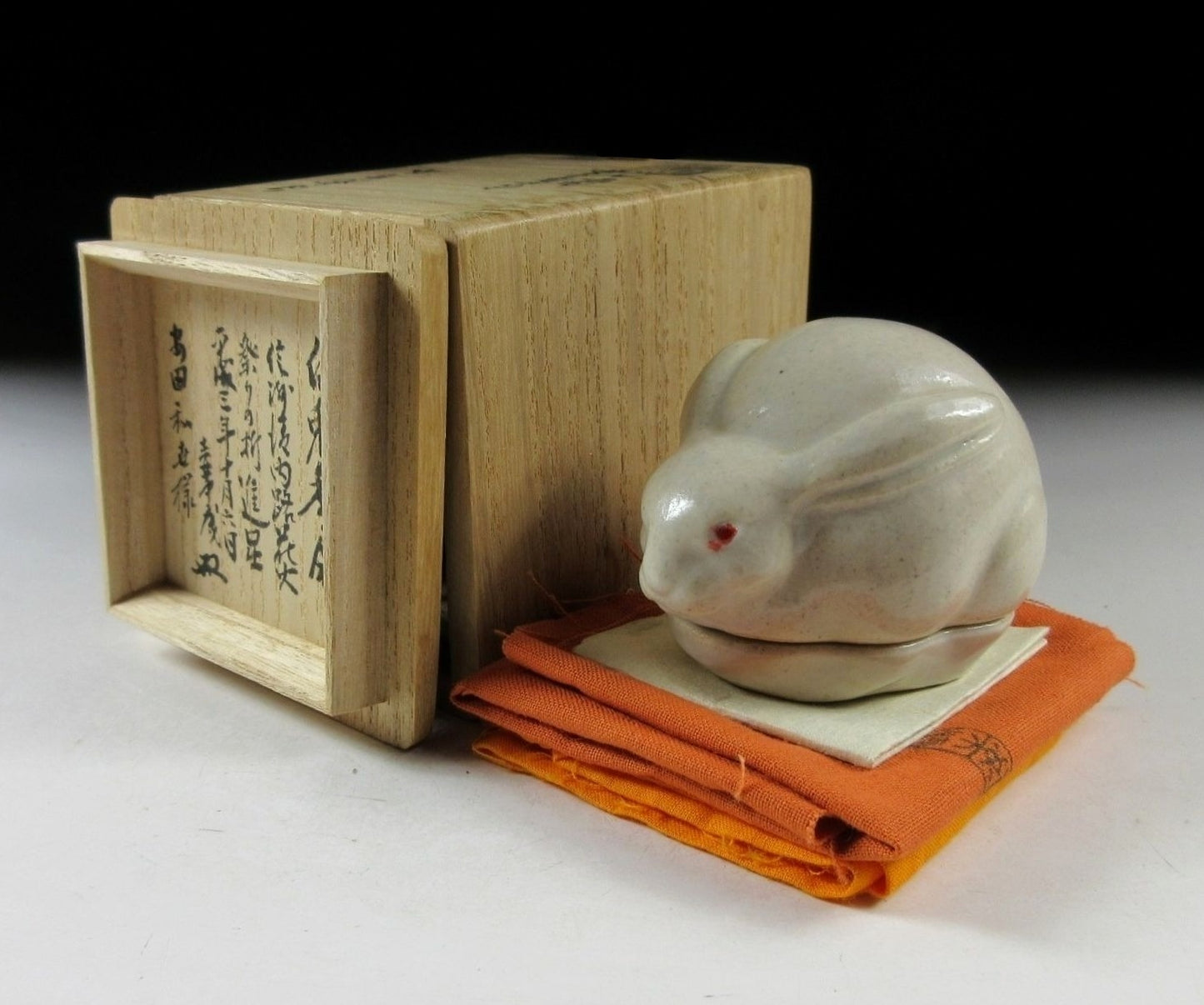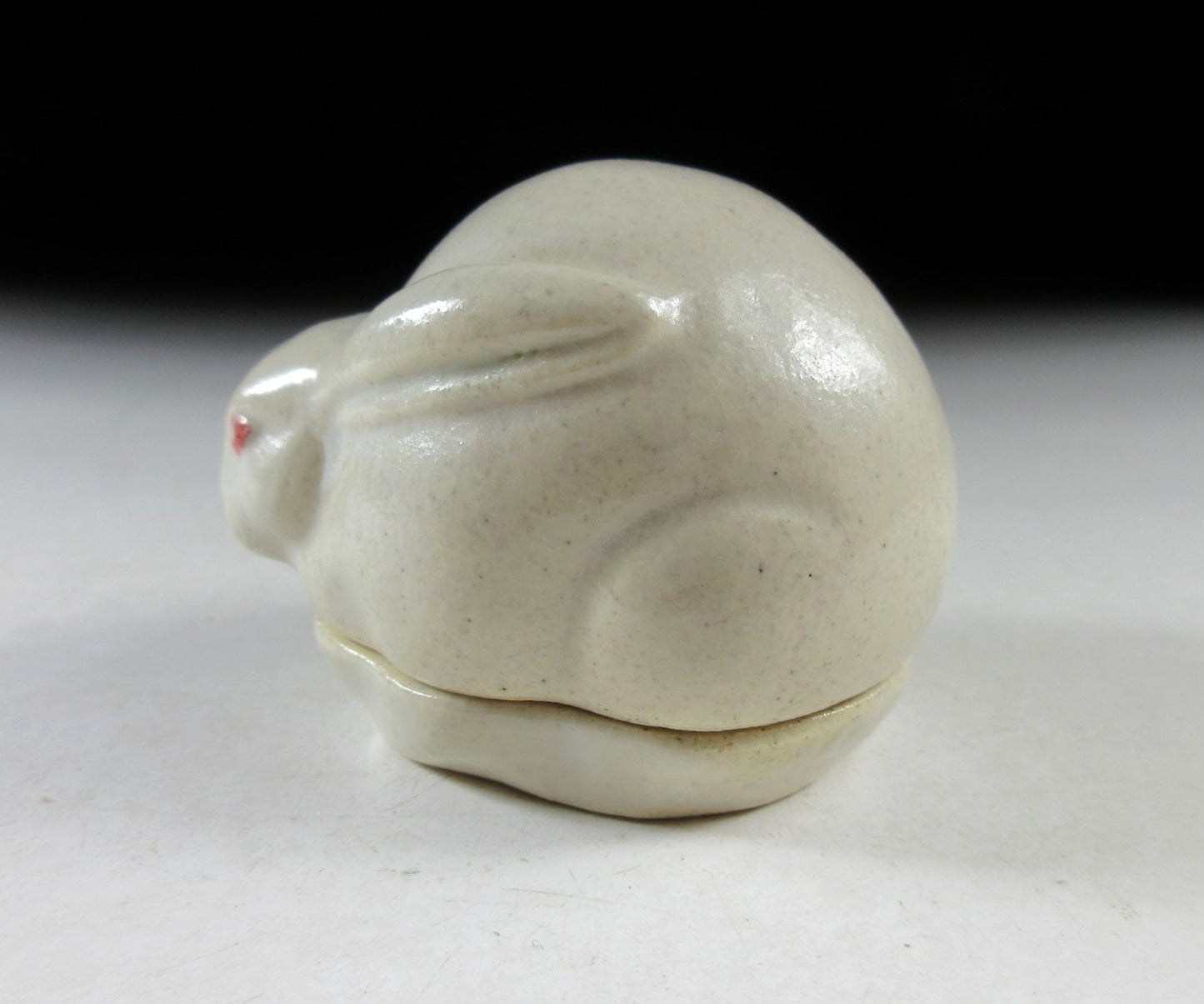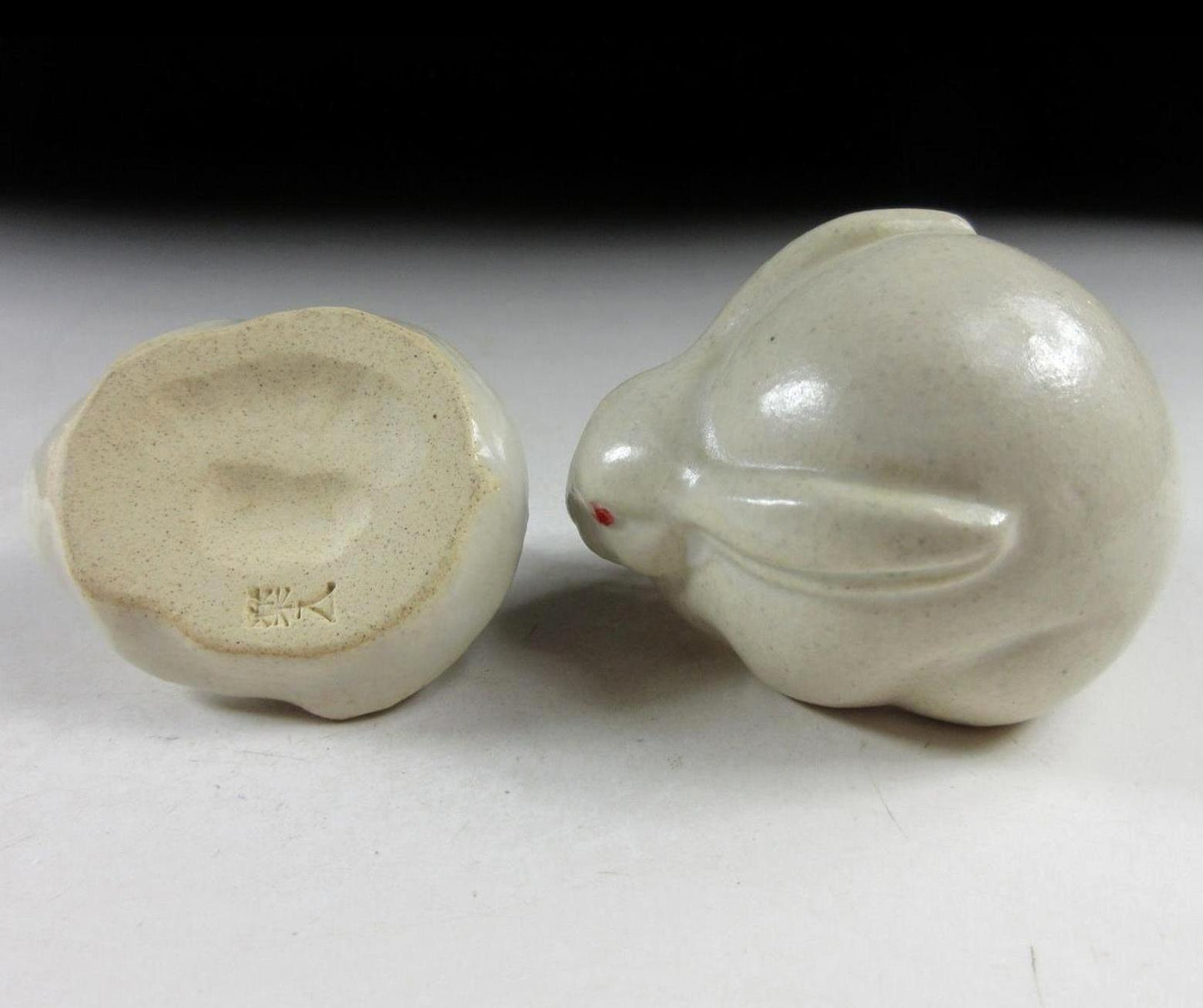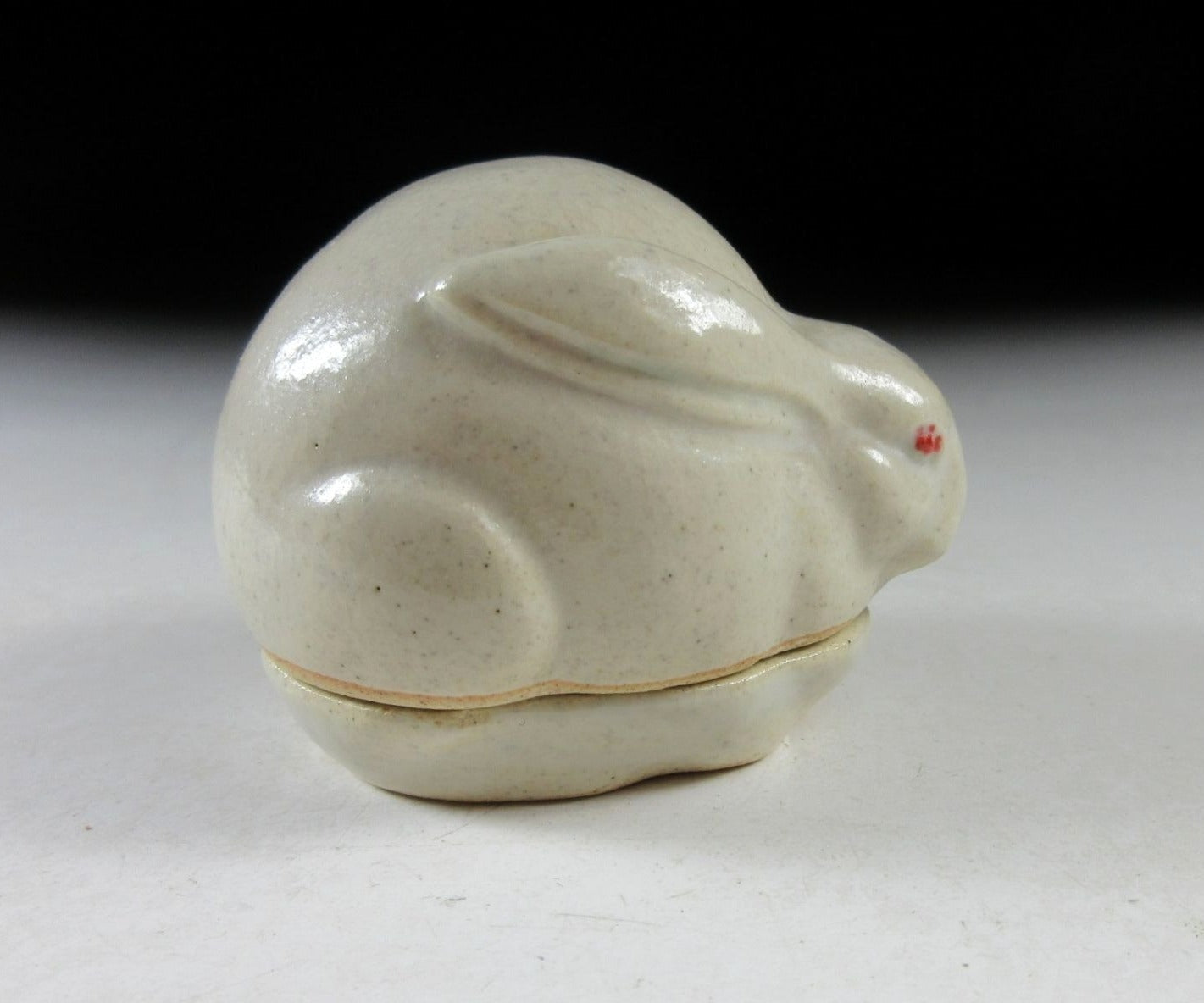Kominka Zakka
Honiwa Rakunyu II Year of the Rabbit Kogo
Honiwa Rakunyu II Year of the Rabbit Kogo
Couldn't load pickup availability
*SHIPPING OPTIONS VARY DEPENDING ON THE DESTINATION, PLEASE SCROLL TO THE END OF THIS LISTING FOR MORE DETAILS.
This listing is for a Shigaraki-ware kogo made around 25 years ago by noted potter, Honiwa Rakunyu II. It is made of high-fired stoneware clay and moulded to resemble a rabbit. Autumn is the time of the year that people across Asia hold gatherings to view the harvest moon. In Japan this tradition is known as tsukimi, or the moon viewing festival. The humble rabbit is also connected to this celebration, as it is commonly believed that a rabbit lives on the moon. The size and shape of this particular kogo is suitable for both woodchip and kneaded incense, although pottery kogo are typically used for kneaded incense during the cooler months. This piece was most likely made to commemorate the Year of the Rabbit back in 1999. The stamp of the potter can be found on the bottom, and it comes with its original signed storage box. It also comes with two wrapping cloths for when the item is not in use, as well as a Japanese language profile paper about the potter.
Honiwa Rakunyu II (d.2002) was a Shigaraki-ware potter and second generation master of the family kiln. After graduating from Shinshu University in 1957, he began studying under Iwaki Hyoue. While learning pottery techniques, he also began to study the tea ceremony. Under the guidance of various tea masters, he devoted himself to the study of modern tea ceremony pottery. In 1960 he built a four-chamber climbing kiln, and 1971 he built an anagama tunnel kiln in the style of the Muromachi and Momoyama periods. The former head priest of Daitokuji Temple, Fukumoto Sekio (b.1930), named the kiln Tsubochu Gama. In 1972 he built a three-tiered semi-underground anagama kiln, and he presented a tea bowl to the President of Sri Lanka during his courtesy visit. In 1978, a large tea bowl and mizusahi were donated to Saidaiji Temple, the head temple of the Shingon sect of Buddhism. Saidaiji, also known as the Great Western Temple, is a Buddhist temple that was once one of the powerful Seven Great Temples in the city of Nara. In 1979 he donated a diamond-shaped mizusashi and a vase to the Taiho-an teahouse run by the Uji Municipal Government in Kyoto Prefecture, and in 1980 he presented a vase to Prince Mikasa (1915-2016). In 1983 he presented an utsushi replica of a chatsubo tea jar on the occasion of the restoration of Tatsuno Castle, and in 1985 he presented a sutra tube and vase to the Sri Lankan ambassador to India. He has held eighteen solo exhibitions nationwide, and eight overseas tours. **Fellow sellers, this information was researched by Kominka Zakka and CANNOT be used in your own listings.
Shigaraki-ware refers to pottery made in Shiga Prefecture. Shigaraki is perhaps one of the more well-known types of stoneware with its origins dating back to the Kamakura period. The Shiga region is home to one of the six oldest kilns in Japan, and this is because of its superb clay. It has a reddish-orange colour, along with a natural ash glaze acquired from the deposit of ashes in the kilns. Pieces of quartz, feldspar or silica can often be found on the surface, giving Shigaraki a wonderful gritty texture and rustic charm. Historically potters produced wares specifically for the tea ceremony, however craftsmen gradually shifted to producing items such as vases and sake bottles as well.
Kogo are for holding incense during the tea ceremony. Kogo vary depending on the season. In summer wooden kogo are used for holding chips of incense wood, and in winter ceramic kogo are used for holding kneaded incense intended for the hearth. During the tea ceremony, incense is added to the charcoal fire during the charcoal-laying procedure.
Sizes
Box: H.9.2cm (3.6”) x 7.3cm (2.8”) x 7.3cm (2.8”)
Kogo: H.4.2cm (1.6”) x L.6.2cm (2.4”) x W.4.9cm (1.9”)
Condition
It’s in very good condition aside from glaze imperfections on the interior and rabbit’s eyes.
THESE ARE SHIPPING ESTIMATES BASED ON THE CURRENT GLOBAL SITUATION
**Germany, France, Greece, Spain, Poland, Austria, Slovakia, Lithuania, Slovenia: NO SHIPPING. Very strict and expensive packaging laws in place and we are not licensed to send products to these countries. We have no plan to register at this time because the process is in some cases very expensive and complicated, plus each country has its own set of regulations and application process.
**USA, UK, Canada, Australia, New Zealand, Switzerland, Norway: Airmail Small Packet (approx. 15-28 days). Combined shipping available up to 2kgs for Airmail Small Packet (please send us a message).
**Asia: Airmail Small Packet (approx. 15-21 days). Combined shipping available up to 2kgs for Airmail Small Packet (please send us a message).
**Central Asia, Middle East, South Africa, Brazil, Mexico: EMS Express 10-15 days.
**Russia: No shipping methods available.
Share


















